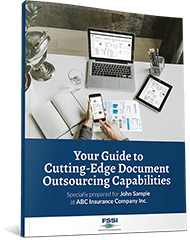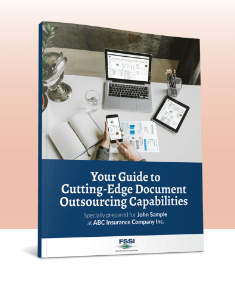Industry News, Paper, Postage and Mailing, Printing, Sustainability
Why Are Paper Prices Going Up? Here’s Why Paper Costs So Much

The Effect of Higher Paper Prices on the Print Industry
In the last few years, there has been a combination of factors leading to paper price increases. With a combination of price hikes, increased demand, availability issues, and other related factors, the following dynamics are responsible for the recent shift in the pulp and paper market. This has greatly affected the print and mail industry. We will be covering the contributing factors to this print increase and some ideas to help your business mitigate these higher costs
Why are Paper Prices Increasing?
The increase in paper prices can be attributed to a combination of factors. As the global economy reopened and businesses regained momentum, the demand for paper surged. However, supply chain disruptions, including raw material shortages and transportation challenges, created supply constraints. This supply-demand imbalance led to a significant rise in paper prices, with a notable 9.7% increase in 2021 alone. The upward trend in paper prices underscores the challenges faced by the industry and highlights the impact of economic recovery and supply chain dynamics on pricing.
6 Reasons Why Paper Prices Are Rising
- Supply and demand dynamics: The balance between supply and demand plays a crucial role in determining paper prices. When the demand for paper products surpasses the available supply, prices tend to rise.
- Raw material costs: The cost of raw materials used in paper production, such as wood pulp and chemicals, has a direct impact on pricing. Fluctuations in these material costs can influence the overall price of paper.
- Energy costs: The energy required for the production process, including electricity and fuel, contributes to the cost of manufacturing paper. Increases in energy prices can translate into higher paper prices.
- Currency exchange rates: Paper production often involves international trade, and fluctuations in currency exchange rates can affect the cost of importing or exporting paper products. Currency fluctuations can influence pricing in the global paper market.
- Environmental regulations: Compliance with stringent environmental regulations adds additional costs to the paper manufacturing process. Investments in sustainable practices and eco-friendly technologies may lead to higher paper prices.
- Supply chain disruptions: Disruptions in the supply chain, such as natural disasters, transportation challenges, a global Pandemic or labor shortages, can impact the availability of paper and contribute to price increases.
Why Are Printing Costs Going Up?
Printing costs are rising primarily due to significant increases in paper prices. The key factors contributing to higher paper costs include:
- Supply chain disruptions and mill closures during the COVID-19 pandemic led to a shortage of paper supply. As demand rebounded after the pandemic, there was not enough production capacity to meet the increased demand, driving up prices.
- Rising energy and fuel costs have made paper production more expensive. The surge in energy prices due to geopolitical events and limited resources has directly impacted the cost of manufacturing paper.
- Increased freight and transportation costs, both for ocean shipping and trucking, have added to the overall paper expenses.
- Labor shortages and higher wages have increased operational costs for paper mills and printing companies.
- The shift in production priorities during the pandemic, with mills focusing more on packaging materials for the e-commerce boom, reduced the supply of printing paper grades.
What Does the Future of Paper Prices Look Like?
An overall decline in demand from businesses amid the COVID-19 (coronavirus) pandemic has resulted in producers cutting prices, thus a 2.6% decline in 2020 alone. However, as the economy reopened and corporate profits began to recover, demand has recovered close to pre-COVID levels. As a result, the price of paper rose significantly, increasing 9.6% in 2021 alone.
Papermakers can’t absorb these costs without passing them along. So, prices are skyrocketing across the industry. These companies are raising prices by 6-15%.
There is some good news in that following this recent price spike, volatility is expected to decrease in 2022. In 2022, the price of paper is expected to rise by 0.2%. Overall, the price of paper is expected to increase at an annualized rate of 2.9% over the next five years.
Has the Demand for Paper Increased?
The demand for paper has increased recently, according to the provided search results. Here are the key points:
- Global consumption of paper and board amounted to around 399 million metric tons in 2020, and it is expected that demand will steadily increase to approximately 461 million metric tons by 2030.
- The pulp and paper industry has been thriving recently, contrary to expectations that it would decline due to the digital age. There is an increasing demand for paper goods.
- Writing and printing paper demand could see an upswing of 8-10 percent soon.
- After a drop in production during the COVID-19 pandemic, there was a huge uptake in demand as economies transitioned out of the pandemic, leading to a shortage of paper supply.
- The shift towards e-commerce during the pandemic led mills to prioritize packaging materials over printing paper grades, further reducing the supply of printing papers as demand rebounded.
The shift towards e-commerce during the pandemic led mills to prioritize packaging materials over printing paper grades, further compounding the supply constraints for printing papers as demand rebounded. The combination of this increased demand and limited supply has contributed to the rise in paper prices and, consequently, higher printing costs.
How to Reduce Printing Costs and Paper Usage?
To combat rising paper costs, companies can implement several strategies to mitigate the impact on their operations:
Optimize paper usage
Companies can explore ways to reduce paper consumption by implementing digital alternatives, promoting paperless processes, and encouraging electronic communication and documentation. By embracing technology and digital solutions, businesses can minimize their reliance on paper and reduce overall costs.
Improve Operational Efficiency
Streamlining internal processes and workflows can help optimize paper usage and reduce waste. By implementing efficient document management systems, businesses can track and control paper usage, ensuring that it is utilized only when necessary.
Seek Alternative Suppliers and Materials
Companies can research and identify alternative paper suppliers or explore different types of paper that may be more cost-effective. It’s important to evaluate the quality and suitability of alternative materials to ensure they meet the required standards for specific applications.
Negotiate Contracts and Partnerships
Engaging in strategic negotiations with suppliers can help companies secure favorable pricing and contract terms. Building strong partnerships with suppliers and exploring long-term agreements can provide stability and potentially reduce paper costs.
Implement Cost-Saving Measures
Companies can implement cost-saving measures such as bulk purchasing, inventory management, and efficient logistics to optimize their paper procurement and reduce associated expenses. By monitoring market trends and adjusting purchasing strategies accordingly, businesses can navigate the fluctuating paper market more effectively.
Consider Sustainable Practices
Embracing sustainable practices not only aligns with environmental goals but can also contribute to cost savings. Recycling paper waste, using eco-friendly materials, and adopting efficient printing techniques can help reduce overall paper consumption and expenses.
Manage Rising Paper Prices by Partnering with a Print and Mail Specialist
The surge in paper prices has presented a significant challenge for businesses, impacting their printing and mailing operations. However, by partnering with a print and mail specialist like FSSI, companies can effectively navigate these rising costs and implement strategies to optimize their paper usage while maintaining operational efficiency and cost-effectiveness.
At FSSI, we leverage our extensive industry expertise and cutting-edge technologies to help clients manage higher paper prices. Our print and mail solutions are designed to simplify document processing and business communication needs, reducing costs through efficient paper utilization, process automation, and bulk discounts we get through our paper and envelope partnerships.
Let FSSI help you manage higher paper prices. Call us at (714) 436-3300 today to speak with a specialist. As leaders in the document outsourcing industry, paper is something we know a lot about. Our print and mail solutions can help you take your document processing and business communication needs to the next level and reduce costs in the process, even in the face of rising paper prices.

Sources:
https://www.thepacker.com/news/industry/paper-price-increases-are-here-stay-exec-says
https://www.ibisworld.com/us/bed/price-of-paper/4595/
https://thehill.com/opinion/finance/3512018-the-price-of-paper/



